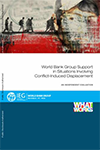Ready to Learn : Before School, In School, and Beyond School in South Asia

Countries that have sustained rapid growth over decades have typically had a strong public commitment to expanding education as well as to improving learning outcomes. South Asian countries have made considerable progress in expanding access to primary and secondary schooling, with countries having achieved near-universal enrollment of the primary-school-age cohort (ages 6–11), except for Afghanistan and Pakistan. Secondary enrollment shows an upward trend as well. Beyond school, many more people have access to skill-improving opportunities and higher education today. Although governments have consistently pursued policies to expand access, a prominent feature of the region has been the role played by non-state actors—private nonprofit and for-profit entities—in expanding access at every level of education. Though learning levels remain low, countries in the region have shown a strong commitment to improving learning. All countries in South Asia have taken the first step, which is to assess learning outcomes regularly. Since 2010, there has been a rapid increase in the number of large-scale student learning assessments conducted in the region. But to use the findings of these assessments to improve schooling, countries must build their capacity to design assessments and analyze and use findings to inform policy.
Citation
“Beteille, Tara; Tognatta, Namrata; Riboud, Michelle; Nomura, Shinsaku; Ghorpade, Yashodhan. 2020. Ready to Learn : Before School, In School, and Beyond School in South Asia. South Asia Development Forum;. Washington, DC: World Bank. © World Bank. https://openknowledge.worldbank.org/handle/10986/33308 License: CC BY 3.0 IGO.”

